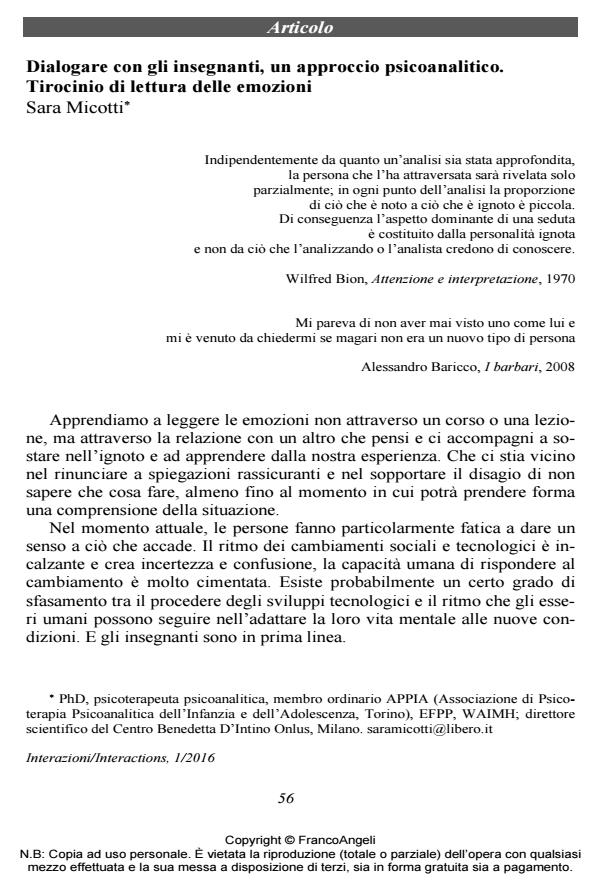A psychoanalytic approach to communicating with teachers. Training in how to read emotions,
Journal title INTERAZIONI
Author/s Sara Micotti
Publishing Year 2016 Issue 2016/1
Language Italian Pages 14 P. 56-69 File size 171 KB
DOI 10.3280/INT2016-001005
DOI is like a bar code for intellectual property: to have more infomation
click here
Below, you can see the article first page
If you want to buy this article in PDF format, you can do it, following the instructions to buy download credits

FrancoAngeli is member of Publishers International Linking Association, Inc (PILA), a not-for-profit association which run the CrossRef service enabling links to and from online scholarly content.
Ideally, school is a place where young people develop their cognitive and emotional skills within an ever-changing world. The classroom is a microcosm of society where the following mental states are engendered: passions, sharing, friendship, exclusion and - on a deeper level - identification movements, splitting, projection and integration. I held Balint Groups in Milan, Italy, for Elementary and Middle school teachers with the aim of improving rapport with their students. We used film clips as tools to develop contact with emotions: the groups watched them and shared their observations and reflections. This article describes how these groups worked on both transforming the emotions and experiences of counter-transference evoked in teachers by their relationship with students, and opening their minds to new ways of understanding. There is also a comment by the Headteacher of the school I collaborated with, which provides an educational framework connecting the experience described in this article with other recent studies on the same topic. Lastly, the Headteacher’s comments describe the changes that are taking place in the field of Education, clarifying the goals, teaching objectives, students’ achievements and current challenges.
Keywords: Balint Group with teachers, the emotional experience of learning and teaching, cinema, how to read emotions
Sara Micotti, Dialogare con gli insegnanti, un approccio psicoanalitico. Tirocinio di lettura delle emozioni in "INTERAZIONI" 1/2016, pp 56-69, DOI: 10.3280/INT2016-001005